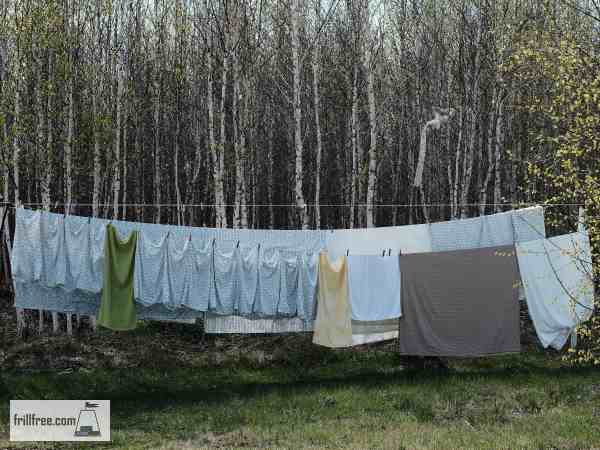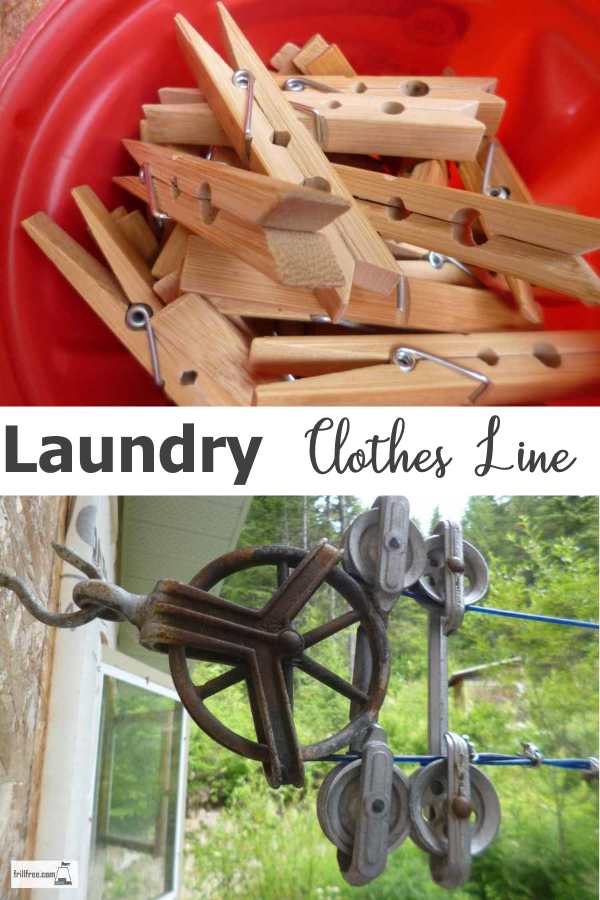- Homesteading
- Frugal Simple Living
- Laundry Clothes Line
Hang Your Laundry On A Clothes Line
Living Simply Doesn't Get Much Better!
I am a participant in the Amazon Services LLC Associates Program, an affiliate advertising program designed to provide a means for me to earn fees by linking to Amazon.com and affiliated sites. Other links on this site may lead to other affiliates that I'm associated with.
There's nothing like the smell of clothes dried in the sun and wind on a clothes line in the back yard.
If you get even a few days a month with sunny weather and a bit of a breeze, you can save so much money and energy on the laundry.
Washing clothes takes a lot of time - first you have to sort the clothes, pre-treat the stains, and then add them to the washing machine while it fills, pour on the carefully measured detergent, then when that's done, put them in the dryer.
But wait!
If you take a few more minutes to hang the clothes on the washing line, they dry in the fresh air and sunshine, leaving them with that unmistakable scent.
Towels and sheets feel new, and crisp, not soft and wilted from the heat of the dryer.
Using a dryer to dry your clothes wears them out so much quicker, meaning they don't last as long.
Tumbling clothes dried on a line for just a few minutes will retain the freshness but make them softer. In winter, dry the clothing indoors first, then finish them in the dryer.
Even if you use a clothesline for part of the year, you'll save money on your wardrobe.
 Sheets drying on a clothesline
Sheets drying on a clotheslineThere are two main parts to a clothes line; the pulleys, and the line itself.
The pulleys are attached firmly to poles or a building - the weight of wet laundry is enough to pull the whole thing down if it's not securely fastened and the clothes are snapping in the breeze.
Use lag bolts to attach them to a solid object like the house or a firmly installed pole.
Buy these supplies for your own clothesline;
Shenandoah Homestead Supply Clothesline Cable, Vinyl Coated Heavy Duty 2000 Lb.(50 ft)Strata C78050V 10" Metal Spacers for Clothesline
Whitmor Natural Wood Clothespins - Heavy Duty (Set of 100)
Strata 6.5" Metal Heavy Duty Pulley
ABN EDPM Bungee Cords with Hooks 10-Pack, 31” Inch (54” Max Stretch)
Clothes pegs or pins can come in many shapes and sizes from cheap pine, to bamboo to plastic. Store them in a covered can to prevent them from getting moldy (if they're wooden) or brittle (in the case of plastic).
You may also want 'spreaders' which have two wheels on them, one for the top line and one for the bottom. They prevent the bottom line (which holds the laundry) from sagging.
To keep the line tight yet have flexibility, get some bungee cords to put on the far end.
The best length for a clothesline, in a clear run without any obstruction, is around 50' or so (16 meters).
Any longer than that, and the line will sag to much. Remove any shrubs or trees so that birds won't perch and release their droppings onto your clean laundry.
Remove the dried clothes as soon as they're dry to prevent this.















